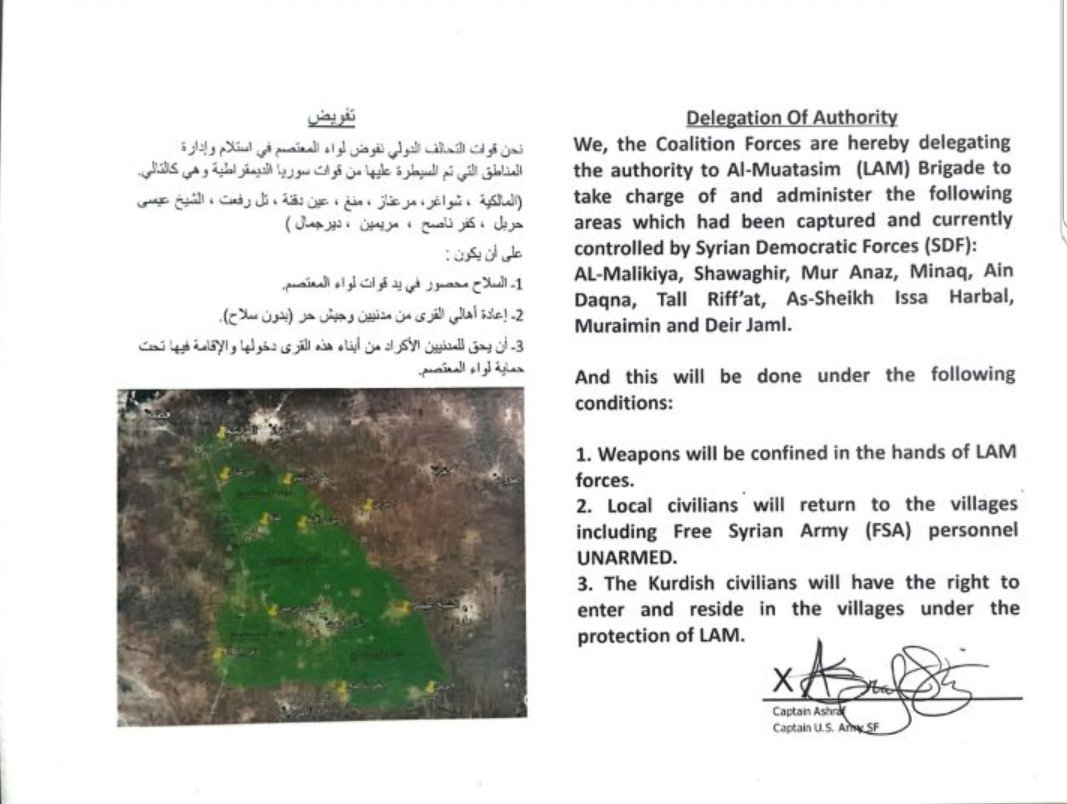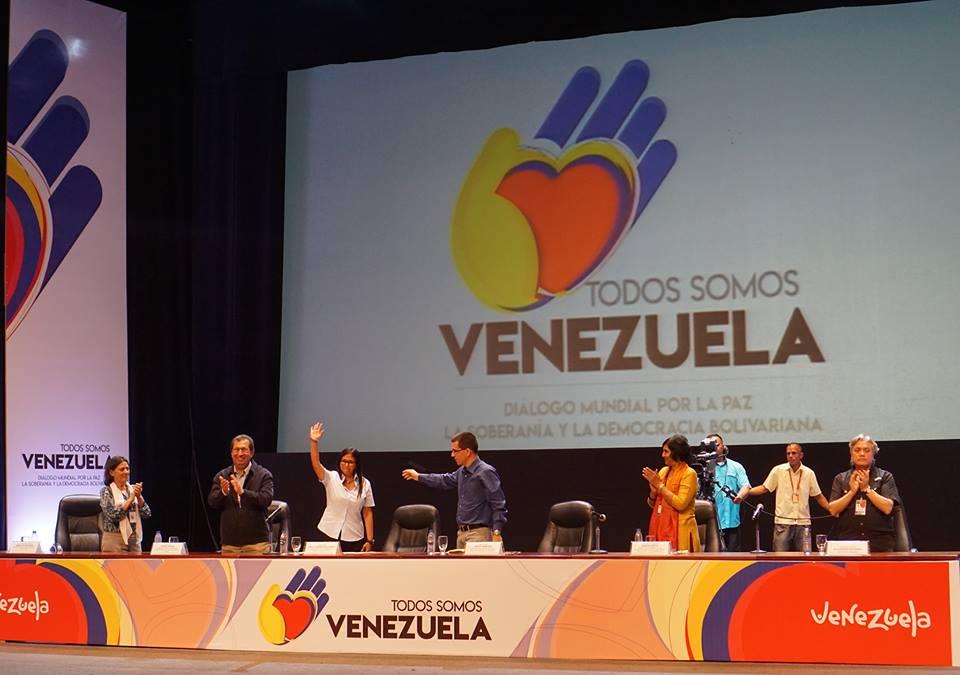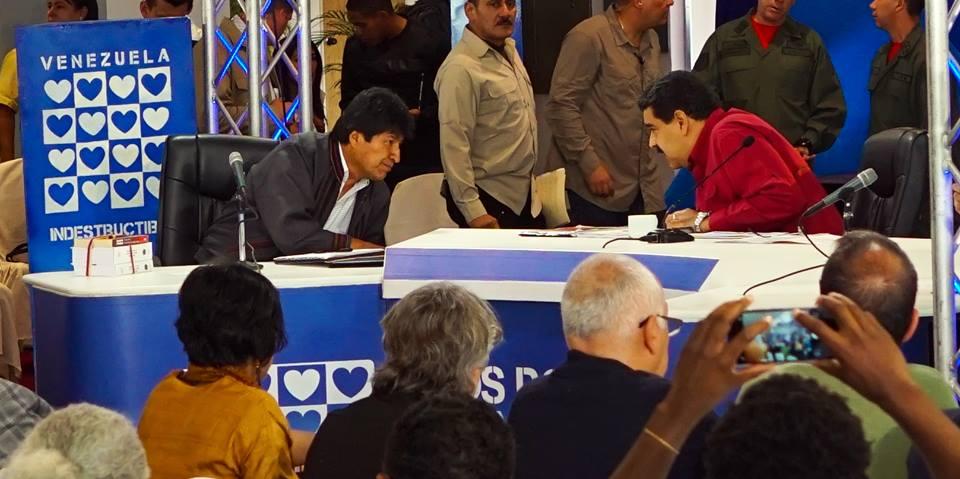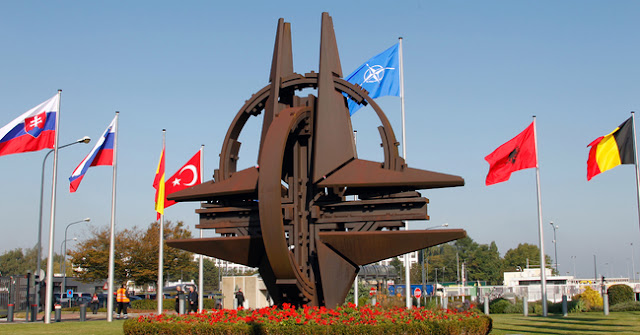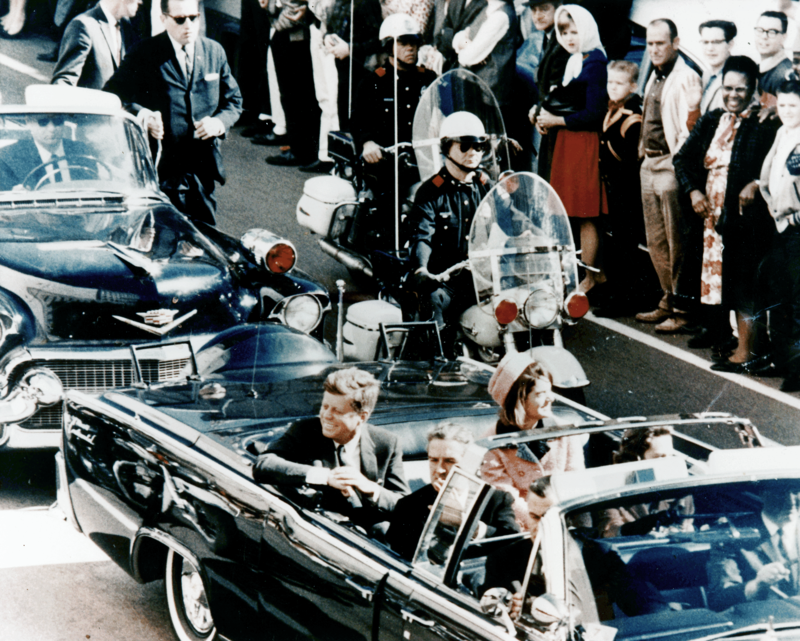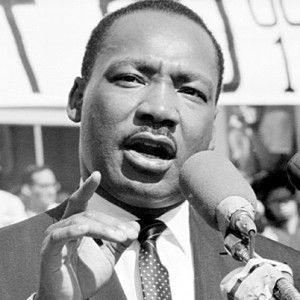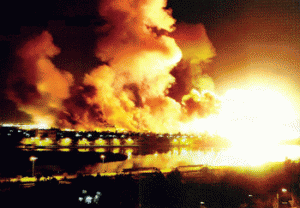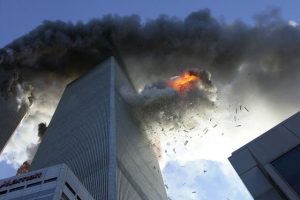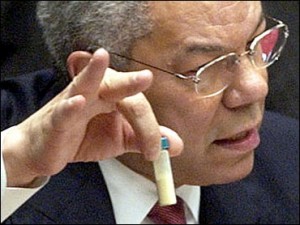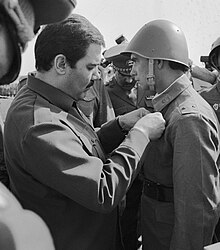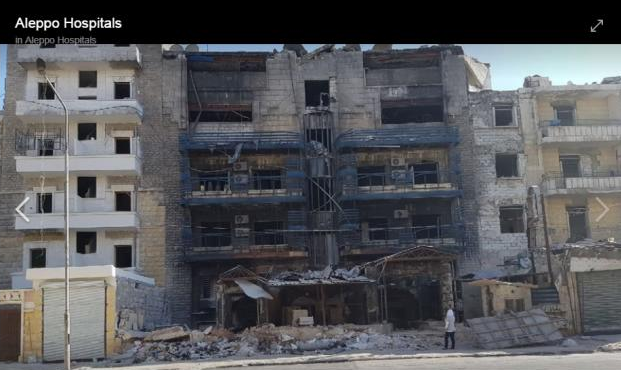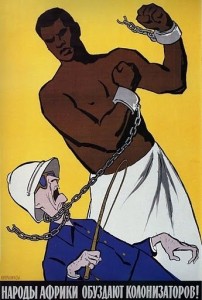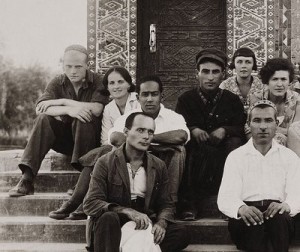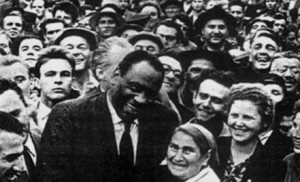It was once again a hot, muggy day in Jakarta. The air was full of pollutants, epic traffic jams blocking entire center of the city. Biasa, as locals would say, or in a lax translation, ‘business as usual’.
It is September 29th, 2017, Friday, just one day before the most sinister anniversary in the entire Southeast Asia.
On September 30th, 1965, the Indonesian military obeying orders from foreign powers (mainly the US and the UK), overthrew the progressive and anti-imperialist government of President Sukarno, murdering between 1 and 3 million men, women and children (including almost all members of the Communist Party of Indonesia – PKI). This was done with the direct help of almost all the major religious organizations (Muslim, Protestant, Catholic and Hindu). The bloodshed continued well into 1966, and the “Rivers were choked with corpses and ran red from blood,” as I was told by Pramoedya Ananta Toer, the greatest Indonesian novelist. All the hopes for a socialist, just and egalitarian motherland were wasted.
Before the coup, Indonesia used to be a true internationalist nation, and was one of the proud founders of the Non-Aligned Movement (the West Javanese city of Bandung hosted its establishing conference in 1955). President Sukarno and his progressive and patriotic government used to hold in their hands almost all the natural resources, trying to build a proud, artistic and productive nation. Sukarno once even humiliated the US Ambassador, in front of a huge crowd, at a packed stadium: “To hell with your aid!” He did not need any Western aid. He was presiding overpotentially one of the richest nations on Earth.
The Communist Party of Indonesia (PKI), the third largest in the world after those of the Soviet Union and China, was going to win the elections, comfortably and democratically, in 1966, while being fully supported by President Sukarno. Their manifesto was clear: anti-imperialism, social justice and land reforms. But who were some of the largest landowners in Indonesia during that period? Religious leaders! And they, together with the military and corrupt elites, decided: “No!” This has to be stopped! No justice. No internationalism. No socialism.” They betrayed the nation and its people;they committed treason and on September 30, 1965, overthrew socialist democracy.
The results were horrifying. Perhaps the worst massacres of the 20th Century took place. Mass slaughter, mass rape, and cutting off of female breasts, torture, and shortly after the initial horrors, overflowing prisons and concentration camps. Around 40% of all the teachers of Java were slaughtered and the military was substituted into the school classrooms. Film studios and traditional theatres were shut down, and writers were sent to Buru concentration camp. Intellectualism was fully discouraged, while Communism, the Chinese language and culture, but also all progressive arts and creativity were either ridiculed, or out rightly banned. Promoted instead, were Western-style turbo-capitalism (that which was invented for the colonies, not that for the local consumption in Europe and North America), ‘religions’ (based on repetitive rituals, not on intellectual or spiritual search for God), ‘family values’ (read: patriarchal oppression), an empty pop culture, and selfishness, boosted by consumerism. All this combined gave birth to some of the worst corruption levels in the world.
Indonesia as it used to be before September 30, 1965, died. Unable to produce anything of substantial value, it began perpetrating the unbridled plunder of its own natural resources, predominantly on behalf of foreign conglomerates. The entire beautiful and naturally rich, enormous islands, like Borneo (the largest island in Asia and the second largest in the world), Sumatra and Papua,were converted into devastated, poisoned and fully privatized ecological and social nightmares.
*
It seems that killing everything decent and hopeful has not been enough for this regime. Even memories have to be killed, even dreams. The great progressive past of Indonesia is being smeared and twisted, until there is nothing more left, only confusion and mechanical religious, family and commercial rituals.
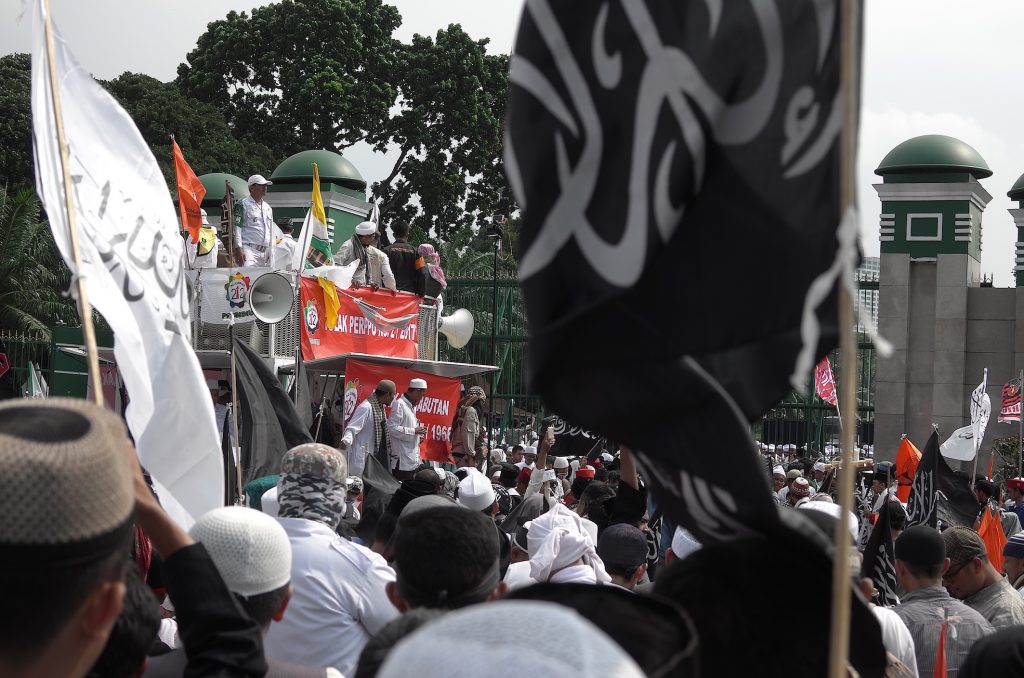
Huge anti-PKI demonstration
Now, one of the mainstream Indonesian magazines Tempo put on its 25 September – 1 October 2017 cover: “SEKALI LAGI HANTU PKI” (“Once Again, Ghost of PKI”).
Whenever it suits the corrupt elites, the military and the religious cadres (three main pillars of the Indonesia oppressive regime), the Communist ghost is evoked. It is depicted as a monstrous, nasty, and murderous creature. Indonesian children were taught that the Communist hammer was thereto smashthe heads of the people, while the sickle was – to cut their throats.
Islamic organizations, as well as the military and police are ‘guarding the nation’ from vicious atheist religious gangs and the security forces regularly dispersing countless meetings. Those who dare to address topics such as social inequality, the lack of decent medical care, affordable education, housing and other basic services, get physically attacked, or legally sanctioned.
MP’s and some government officials, who dare to talk about the necessity to redistribute the wealth of the country, favoring the poor, get attacked or at least openly smeared, including such individuals like the present President, Joko Widodo. Popular, extremely effective and left-leaning, the Governor of Jakarta, ‘Ahok’, was recently locked up in a prison for ‘insulting Islam’ –on thoroughly bogus charges. His biggest ‘sin’ appeared to be his determination to build a mass public transportation system (instead of forcing people to use private vehicles, as all previous pro-business administrations have been doing, submissively), creating green public areas, building drainage and cleaning clogged and polluted canals.
‘Ahok’ is of Chinese origin, a great ‘crime’ in the racially intolerant Indonesia. President Widodo is not. No matter what his ‘blood’ is, he is repeatedly accused of being a ‘Communist’, especially after his State of the Nation speech earlier this year. He has been addressing issues related to social justice, something thoroughly unacceptable in extremely pro-business and pro-Western Indonesia.
Putting the interests of his people above the interests of foreign corporations has gained him countless enemies, at home (from the elites servile to the West) and abroad. His arch-rival and enemy, General Prabowo (former commander of the notorious Kopassus Special Forces under Suharto) is taking full advantage of the situation.
Many Islamists are now calling President Widodo ‘a Communist’. In Indonesia, it is synonymous with a threat and it could also mean a death sentence.
*
And so it is September 29th, 2017, Friday, in Jakarta, Indonesia. Thousands of protesters are gathering in front of the main gate of the Parliament. Today it is hot and humid, and the air is hopelessly polluted.
A river of human beings flows slowly. Today it consists predominantly of Muslim militants. Loudspeakers are blasting “Allahu Akbar!” and almost simultaneously:
“Ganyang, ganyang, ganyang PKI
Ganyang PKI, sekarang juga!”
(Destroy, destroy, destroy PKI
Crush PKI right now!)
These are mainly men, excited and determined. Some women are present, too. Most of them are fully covered. And there are also some children, clinging to their parents, several of them scared, but others clearly enjoying the loud yells and deafening noise.
Numerous black banners, carrying Arabic insignia, can be spotted in the hands of demonstrators, some suspiciously resembling those of the ISIS. Other flags belong to such organizations as the outlawed but largely tolerated Hizbut Tahrir Indonesia, which is determined to establish a caliphate all over this vast archipelago.
Theoretically illegal but also tolerated Forum Pembela Islam (FPI) – Islamic Defender’s Front – is operating openly, and it is rubbing shoulders with the police and other security forces. No one would dare or even bothers to stop them from giving speeches or publicly displaying force.
It is obvious that the law is taken seriously only when it comes to the Communists (who are now practically non-existent in this country), or to any socially or people-oriented movements. Radical Islam is increasingly becoming untouchable, as it generally defends the status quo, as well as the political interests of several high-ranking extreme right-wing military officers, business elites, and Western imperialists.
I look around and I see not a single Western reporter. Surely they are busy sitting in their clubs, luxury hotels and condominiums, dutifully scribbling that Indonesia is a ‘vibrant democracy’, and ‘a country known for its predominantly tolerant brand of Islam’; an official Western dogma since 1965 coup.
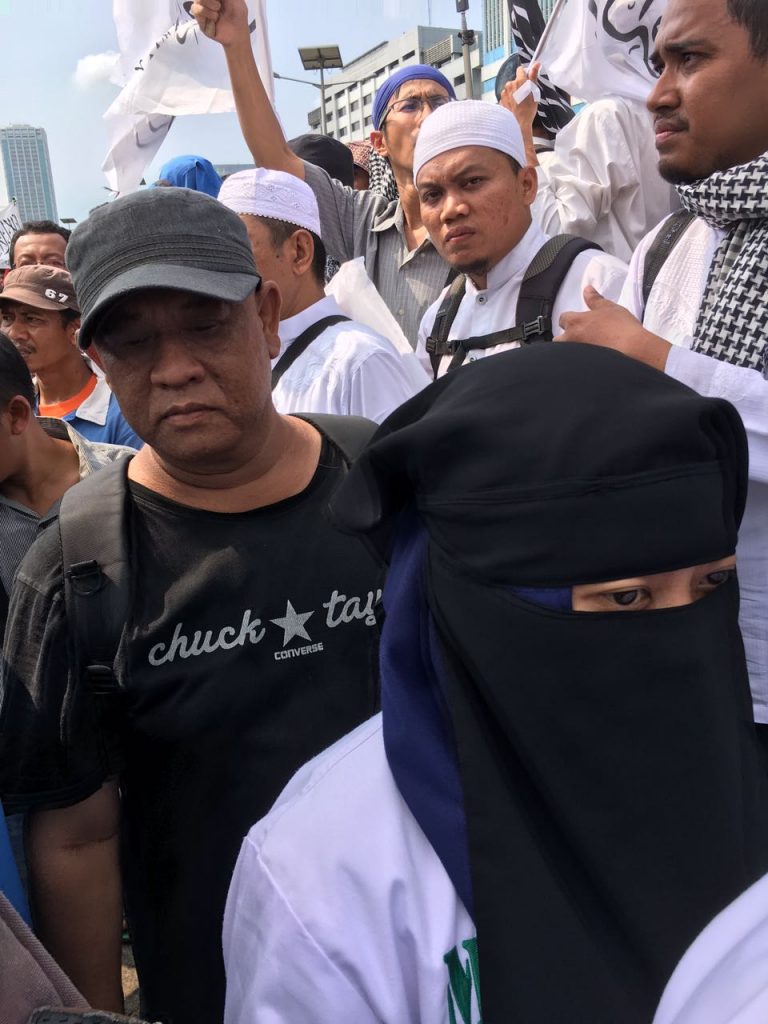
Anti-communist march
At one point I’m approached by a group of young men with a small camera.
“What do you think about PKI?” I’m asked in English.
I pretend to be totally brain-dead. I smile. We shake hands.
“You killed PKI here, didn’t you?” I reply with a question.
“You think so?” they are grinning, talking to me as if I was a child. “You really think so? You are mistaken. PKI are like rats; they are hiding underground… they are everywhere. But don’t worry, we will get them all, soon!”
“Islam is a religion of peace. Indonesians are peaceful people,” his friend concludes. He sounds like the BBC.
*
Then it is my turn to ask questions. I go from person to person. I want to know what do they really know about the PKI, about Communism? For years and decades, Indonesians have been bombarded by grotesque propaganda which was aiming at discrediting everything great and positive that ever took place in the Communist and socialist countries, from the Soviet Union and China, to Cuba, Venezuela, Vietnam, North Korea and dozens of other left-wing states all over the world.
After 1965, the perception of Indonesians about the world was never based on knowledge and well-informed analyses, but instead on the lowest grade of Western and local propaganda, on racist clichés, and on the gross censorship of everything that could challenge official dogmas.
I talk to a dozen “Communism-haters” and I realize that they know absolutely nothing about the subject they are loudly shouting about. Some are clearly paid to be here. Some have nothing better to do. Some are, perhaps, subconsciously scared about the emptiness of their lives in present-day Indonesia, and they need to cheer each other up, with hate speeches and feelings that they are not alone, that they are like hundreds of millions of others.
Mrs. Bode from Gerakan Ibu Negeri (Movement of the Country’s Mothers):
“We are here protesting against resurgence of the PKI!PKI is here; it exists! Their members are all over the social media. They even held seminars, recently.”
Some seminars were held recently. Not by the PKI, but by scholars and activists who were trying to address the history of Indonesia, particularly the coup of 1965. But the military interfered. Orders were given to break such encounters.A one-sided interpretation of history is the main and sacred pillar of the propaganda unleashedby the regime.
Mr. Wahnad from Majelis Taklim Nurul Ikhlas (Islamic studies assembly) from the city of Bekasi:
“We are supporters of the HTI and we are against the government regulation which bans extremist mass organizations like ours. But PKI is real danger to our country. We want them to be banned. Now we even have them represented in the Parliament. Ribka Tjiptaning, an MPs from PDIP, proudly stated that she is a daughter of a former PKI member!”
Poor Ms. Ribka Tjiptaning is the daughter of a former PKI member (and a Javanese aristocrat) who was hanged upside-down and tortured in front of her and her little brother (when they were children), before being sent to a prison. Consequently, each of her steps is being scrutinized as if under a microscope. She is clearly left wing, perhaps the most progressive Indonesian politician. And she wrote a book called “I’m Proud To Be a Daughter of a PKI Member”. But this lone socialist voice could hardly be mistaken for a great renaissance of the Communist thought in Indonesia.
A small, bearded man wearing white robes introduced himself only as Hamba Allah (Allah’s slave):
“We are against the resurrection of PKI. They have distributed t-shirts, pictures, and other things, and there are even some children of the PKI members now pushing this ideology.”
Ms. Khairunnisa from a madrasah in Sawangan, Depok:
“We are against the resurgence of the PKI. PKI was a party that did some sadistic things to Muslims in general and to Ulamas in particular.”
“Sadistic things?” I wonder. The PKI was a relatively tame, constitutional and democratic political party. Even in 1965, many of its members were Muslims. Unless by ‘sadistic things’ she meant that it was pushing for land reforms, and had it won the elections in 1966 (it definitely would have done, if the West had not intervened), it would most definitely have broken the scandalous and feudal mass land ownership by the religious leaders.
“Yes, sadistic,” Ms. Khairunnisa raises her voice.
“How do you know?” I ask.
She replies without hesitation:
“We know from G30S/PKI film and also from what the teachers told us. We haven’t read any history books on this issue; why should we? We know anyway…”
By “G30S/PKI” she means an official state propaganda film, full of gore, with which all children of Indonesia were terrorized and shockedwith on the anniversary of the coup. The film was directed by an arch ‘cultural’ collaborator with the ‘New Order” regime of General Suharto – Mr. Arifin C. Noer.
*
At one point, I get fully covered by an enormous white flag with Arabic script. The flag covers several lanes of the roadway. Perhaps, as a foreigner, I’m being shown my place, taught a lesson, but I don’t care. I just sit down on the concrete road divider and rest for a couple of minutes. It is cooler under the flag, and all those aggressive, militant noises are now mercifully muted.
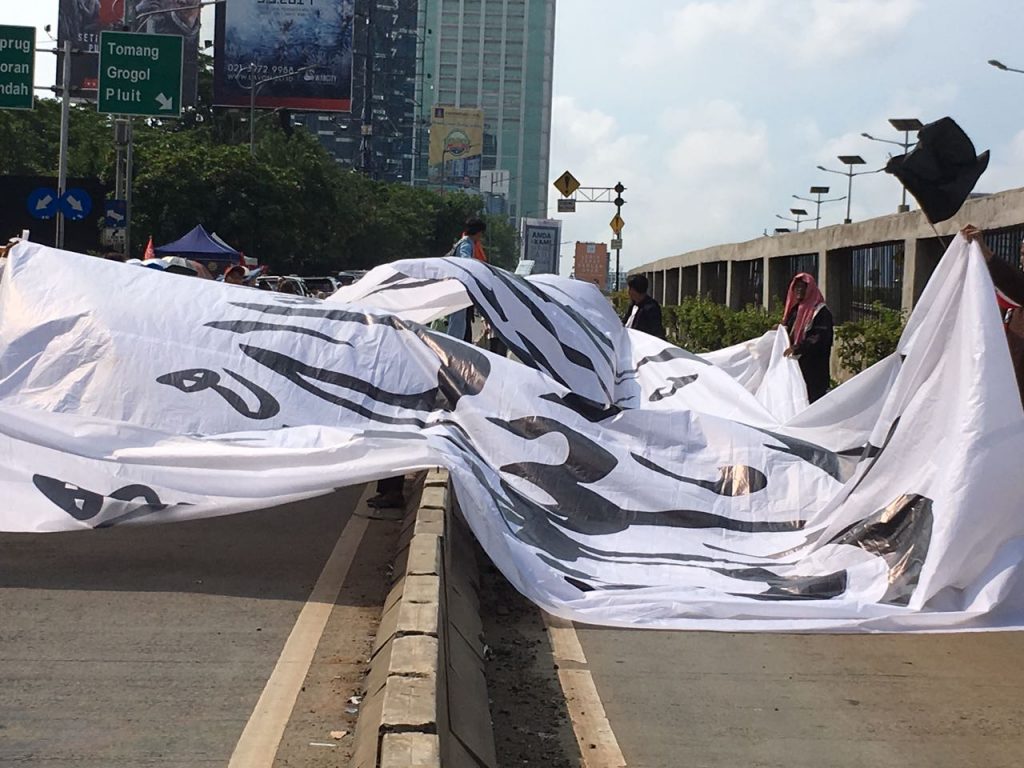
The flag under which I was later burried
‘Indonesia is a peaceful country’, I think, sarcastically. That’s what the West wants everybody to believe, convincing even Indonesians themselves that it is the case. ‘Indonesia committed three horrid genocides after 1965 – against its own people, against inhabitants of East Timor, and now against Papuans. Here, I have witnessed and covered all sorts of horrors, for decades: from the mass rapes of Chinese women in Jakarta and Solo, to religious violence in Ambon, Lombok and elsewhere. Even members of most of the non-Sunni Muslim groups (including Shia, Liberal Islam, Ahmadiyah) are frequently attacked, even physically liquidated.
The West praises Indonesia, as long as the country allows its companies to plunder the vast natural resources, in such places as Borneo (Kalimantan), Sumatra and Papua, as long as Indonesia remains anti-Communist, as long as its elites – business, military and religious – are willing to sacrifice hundreds of millions of its defenseless, desperately uninformed and mainly wretched citizens.
*
“Protests in front of the Parliament were confusing. They brought the issue of PKI awakening. But they were led by the hardline Islamist group, HTI, which is itself banned,” explained Iman Soleh, a professor at the Faculty of Social and Political Science (University of Padjadjaran- UNPAD). He continued:
“In the meantime, it is suspected that the demonstrations were supported by anti Jokowi (President Joko Widodo’s nickname) parties, especially Gerindra and PKS… also Aksi 299 is allegedly funded by General Prabowo group, which always uses month of September to bring forward the issue of ‘PKI awakening’… of course it does it in order to weaken Jokowi’s government.”
In Indonesia, everything appears to be confusing, even what is and what isn’t truly Communist.
Several months ago I met a former Indonesian Mujahedeen fighter in Afghanistan, who barefacedly told me that the present-day Russia is actually Communist, and so is Assad’s government in Syria. According to him, even the governments of Karzai and Ghani in NATO occupied Afghanistan continue to be essentially Communist.
In the minds of many local people, Communist ghosts appear to be crawling out from every corner, even from the tiniest cracks in the floor.
Indonesia is scared; it is clearly not at peace with itself.
It is not really scared of “Communism”, but of something else, although it finds very difficult to define what exactly is frightening it.
Between 1 and 3 millions of corpses could compile an unimaginably huge mountain of horrors. Most of the Indonesian families have both victims and killers in their ranks. And the killings in 1965/66 Indonesia were not perpetrated ‘long-distance’, by pressing some button. People were often slaughtered with bare hands. Victims looked into the eyes of their killers and tormenters, and they were begging, screaming, howling.
There were never any trials like those that took place in Chile, Argentina or South Africa. There was no serious reconciliation process. The military leaders are not rotting in jail; they are actually running the country.
In fact, the crimes have never been acknowledged. Even worse: the victims are still being officially blamed for the beginning of the 1965 ‘tragedy’.
A bad conscience is hanging over this entire enormous archipelago. Bad conscience because of at least three genocides committed in the last half a century, because of selling the entire country to foreign interests, because of the unimaginable plunder of this once, a long time ago, beautiful and abundant land.
Bad conscience is being silenced by loud senseless sounds of brainless pop music, by countless religious rituals, and by continuous attempts not to read anything serious, not to learn and not to understand.
Another anniversary of the terrible event has just passed. And thousands took to the streets to protest against the victims. They went to insult the memory of those who were mercilessly slaughtered on orders coming from the West. They went to demand that the days of true independence and the greatness of Indonesian nation would never return.
Andre Vltchek is a philosopher, novelist, filmmaker and investigative journalist. He has covered wars and conflicts in dozens of countries. Three of his latest books are revolutionary novel “Aurora” and two bestselling works of political non-fiction: “Exposing Lies Of The Empire” and “Fighting Against Western Imperialism”. View his other books here. Andre is making films for teleSUR and Al-Mayadeen. Watch Rwanda Gambit, his groundbreaking documentary about Rwanda and DRCongo. After having lived in Latin America, Africa and Oceania, Vltchek presently resides in East Asia and the Middle East, and continues to work around the world. He can be reached through his website and his Twitter.
This article was originally published by New Eastern Outlook.
All images in this article are from the author.







